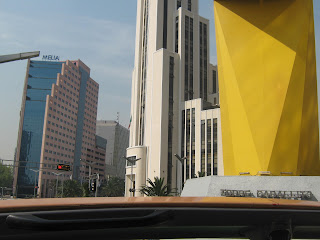Once on the water, the scale of the Amazon basin began to unfold. As context, here a few facts about the Amazon:
1. It dumps up to 300,000 cubic meters of fresh water into the Atlantic PER SECOND, which equals the volume of the next 5 largest rivers combined and accounts for 20% of the worldwide total volume of river flow into oceans.
2. It is the second longest river in the world, after the Nile (although there is some dispute about this).
3. The Amazon Basin is exceptionally flat; on average, the river falls slightly more than one cm per kilometer! This also means that in the wet season, it floods thousands of square kilometers of jungle to depths of 15 meters. During this time, the river also grows as wide as 40 kms.
This third point was particularly relevant this year, as the flooding has been record-setting. Hundreds of thousands of people along the Amazon in Peru, Columia and Brazil have been displaced. That said, the locals carry as best they can, living in the upper 1/2 or 1/3 of their houses and building ramshackle walkways to get around. Although it's obviously a crisis, people seem to realize that they are at the mercy of the mighty river and they simply adapt to its moods. The boat ride reinforced the extent of the flooding as we passed village after village that had been completely inundated, many with only thatched roofs poking above the murky water.
The speedboat trip ended in Santa Rosa, Peru, which is one of the three adjacent towns deep in the Amazon basin that comprise "Tres Fronteras." Here, in less than an hour, you can easily visit three different countries: Santa Rosa, Peru; Tabitabinga, Brazil; and Leticia, Columbia. Given the proximity of the three towns (Tabitabinga and Leticia are side-by-side, and Santa Rosa is a 5 minute boat ride across the river) and their combined isolation, border formalities are light. On my second afternoon, I simply ambled across the border (shown below) into Tabitabinga, Brazil and then back into Leticia, Columbia, 30 minutes later - no documents, no questions, nothing. Normally, Canadians have to apply for an expensive visa prior to arriving in Brazil, unlike most other South American countries.
While not especially picturesque, Leticia is a comfortable little town. After a couple of nights here, I took a two hour boat ride back up the Amazon to a fascinating little community called Puerta Narino. With motorized vehicles outlawed, well-organized trash collection, and responsible sewage and water systems, it was a welcome change from the rest of the noisy, polluted cities I've visited in South America.
Of course, large parts of the town were also flooded. And any slim desire I had to swim in the obscure waters of the river disappeared when I saw that the local cemetary had also been flooded!
On my last day, I took a boat trip up the river with a guide to see the Amazonian river dolphins. There are two species: smaller grey dolphins, and the more famous pink ones (which are grey when young, but gradually turn pink with age). I saw a number of the smaller ones, but was a bit unlucky not to see any of the pink ones. We also didn´t really get close to the ones we saw, so I have no pictures of them ... but I do have a shot of my local guide earnestly searching for the elusive pink ones!
The boat tour was fascinating regardless; in fact, it was a combined river cruise and conopy tour. For kilometers in every direction, the forest was flooded to a height of 10-15 meters, meaning we floated through the canopy of what is normally quite a tall jungle.
Ultimately, although I stayed only a few days, I got an up-close look at the incredible complexity of the Amazonian ecosystem. And the flight out reinforced the scale, as unending, dense jungle stretched out under the plane for hundreds of kilometers in every direction (actually thousands of kilometers to the east). Together, the complexity and scale certainly make this one of the most remarkable ecosystems on earth.











.jpg)
.jpg)




.jpg)
.jpg)
.jpg)
.jpg)
.jpg)






































